REPRODUCTION
AR&D COVID research
Human Milk from Previously COVID-19-Infected Mothers: The Effect of Pasteurization on Specific Antibodies and Neutralization Capacity.
Britt van Keulen, Michelle Romijn, Albert Bondt, Kelly A Dingess, Eva Kontopodi, Karlijn van der Straten, Maurits den Boer, Judith Burger, Meliawati Poniman, Berend Bosch, Philip Brouwer, Christianne de Groot, Max Hoek, Wentao Li, Dasja Pajkrt, Rogier Sanders, Anne Schoonderwoerd, Sem Tamara, Rian Timmermans, Gestur Vidarsson, Koert Stittelaar, Theo Rispens, Kasper Hettinga, Marit van Gils, Albert Heck, Hans van Goudoever
Dept. of Pediatrics, Amsterdam UMC, EMMA Children’s Hospital & Others
Since the outbreak of COVID-19, many put their hopes in the rapid availability of effective immunizations. Human milk, containing antibodies against syndrome coronavirus 2 (SARS-CoV-2), may serve as means of protection through passive immunization. We aimed to determine the presence and pseudovirus neutralization capacity of SARS-CoV-2 specific IgA in human milk of mothers who recovered from COVID-19, and the effect of pasteurization
on these antibodies. This prospective case control study included lactating mothers, recovered from (suspected) COVID-19 and healthy controls. Human milk and serum samples were collected. Human milk contained abundant SARS-CoV-2 antibodies in 83% of the proven cases and in 67% of the suspected cases. Unpasteurized milk with and without these antibodies was found to be capable of neutralizing a pseudovirus of SARS-CoV-2 in (97% and 85% of the samples respectively). After pasteurization, total IgA antibody levels were affected by HoP, while SARS-CoV-2 specific antibody levels were affected by HPP. Pseudovirus neutralizing capacity of the human milk samples was only retained with the HPP approach. No correlation was observed between milk antibody levels and neutralization capacity.
Human milk from recovered COVID-19infected mothers contains SARS-CoV-2 specific antibodies which maintained neutralization capacity after HPP. All together this may represent a safe and effective immunization strategy after HPP.
Association between COVID-19 lockdown measures and the incidence of iatrogenic versus spontaneous very preterm births in singleton and multiple pregnancies in the Netherlands.
Job Klumper, Brenda Kazemier, Jasper Been, Kitty Bloemenkamp, Marjon de Boer, Jan Jaap Erwich, Wieteke Heidema, Frans Klumper, Sebastiaan Nij Bijvank, S. Guid Oei, Martijn Oudijk, Sam Schoenmakers, A.S. van Teeffelen, Christianne de Groot
Dept. of Obstetrics and Gynecology, Amsterdam UMC and Perinatal Centers
The COVID-19 pandemic led to regional or nationwide lockdowns as part of risk mitigation measurements in many countries worldwide. Recent studies suggested an unexpected and unprecedented decrease in preterm births during the initial COVID-19 lockdowns in the first half of 2020. Most studies failed to differentiate between spontaneous and iatrogenic onset of delivery and between singleton and multiple pregnancies. We therefore decided to collect data on the incidence of very and extremely preterm birth in the Netherlands during the first two months of the first national COVID-19 lockdown period. We
collected data on preterm births <32 weeks of gestation from all 10 perinatal centers in the Netherlands during the first national lockdown from March 15 up to May 15, 2020. Incidences of spontaneous and iatrogenic preterm birth were calculated using an estimate of the total number of births in this period, derived from a national database (Praeventis). We compared the incidence of preterm births in 2020 with incidence in the corresponding period over 2015-2018 using data from the national perinatal registry (Perined).
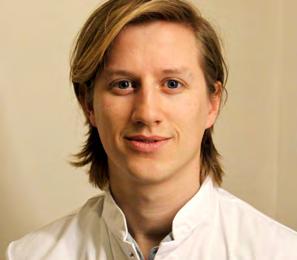
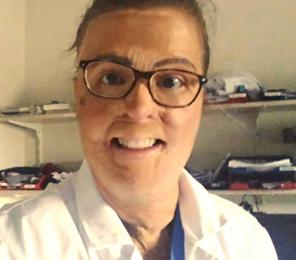
The impact of the COVID-19 pandemic on infertility and endometriosis patients in the Netherlands: the use of telemedicine, quality of life and patient-centeredness.
Kimmy Rosielle, Jasmijn Bergwerff, Anneke Schreurs, J Knijnenburg, B de Bie, J Maas, A Nap, Madelon van Wely, Nils Lambalk, Mariette Goddijn, Ilse Custers, Laura van Loendersloot, Velja Mijatovic
Dept. of Obstetrics and Gynecology, Endometriosis Center, Amsterdam UMC & Others
The global outbreak of coronavirus disease 2019 (COVID-19) has led to a significant increase of pressure on health care systems all over the world. For infertility patients and endometriosis patients, this resulted in temporary cancellation of physical appointments, elective surgeries and assisted reproductive technologies during the COVID-19 pandemic.
Using online questionnaires, a crosssectional cohort study was conducted amongst 555 infertility and endometriosis patients and 101 health care providers in the Netherlands, funded by ZonMw.
The results show that infertility patients, endometriosis patients and their health care providers rate the telephone and video appointments replacing the usual physical consultations as a good alternative during the pandemic. All participants agree that the telephone appointments are not a good replacement for future physical consultations after the pandemic.
Most patients with infertility reported an increase in stress levels due to the temporary shutdown of infertility treatments. This increase in stress was not seen as much in endometriosis patients. Using a questionnaire designed to score the fertility related quality of life, the infertility patients reported a lower quality of life than previously seen in the Netherlands. The endometriosis patients filled in a questionnaire on quality of care, and the results of this questionnaire show that these patients scored the quality of care the same as previously determined.
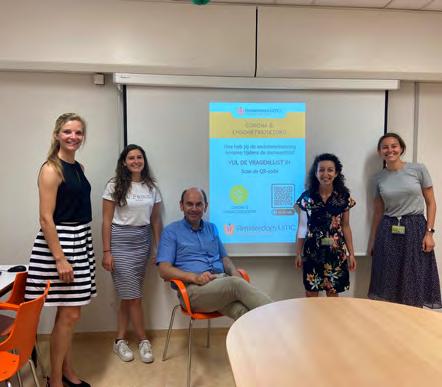
Stress, anxiety and depression in 1466 pregnant women during and before the COVID-19 pandemic: a Dutch cohort study
Sanne Zilver, Birit Broekman, Yvette Hendrix, Robert de Leeuw, Stijn Mentzel, Marielle van Pampus, Christianne de Groot
Dept. of Obstetrics and Gynecology, Amsterdam UMC and OLVG
The COVID-19 pandemic has negatively affected many people’s mental health with increased symptoms of stress, anxiety and depression in the general population. Anxiety and depression can have negative effects on pregnant women and result in poor neonatal outcomes. Therefore, we analyzed stress, anxiety and depression in pregnant women during the COVID-19 pandemic compared to pregnant women before COVID-19.
Pregnant women were recruited through social media platforms in 2020. The Hospital Anxiety and Depression Scale (HADS) and the Perceived Stress Scale (PSS-10) were analyzed. 1102 pregnant women completed the questionnaires during COVID-19, and 364 pregnant women before COVID-19. We found no differences in clinically high levels of
anxiety (HADS-A ≥ 8) and depression (HADS-D ≥ 8) in women during COVID-19 (19.5% and 13.2%, respectively) and women before COVID-19 (23.1% and 15.7%, respectively).
Women who related their stress to the COVID-19 pandemic reported significantly higher overall stress levels on the PSS-10 compared to women with stress unrelated to COVID-19 (mean, 15.62; standard deviation [SD], 6.44 vs. mean, 10.28; SD, 5.48; p < 0.001).
In contrast to previous studies, COVID-19 did not increase anxiety and depression levels in Dutch pregnant women. Women who related their perceived stress to the COVID-19 pandemic experienced higher stress levels than women who did not relate their stress to the COVID-19 pandemic, suggesting that interventions that specifically aim to reduce COVID-19 stress, may help to reduce overall stress levels in pregnant women during the pandemic.

COVID-19 work by the Cochrane Gynaecology and Fertility Satellite
Madelon van Wely, Elena Kostova
In March 2020, in a response to the emerging pandemic, drs Madelon van Wely and Elena Kostova from the Cochrane Gynaecology and Fertility satellite developed an online database containing data extracted from all published reports on pregnancy and neonatal outcomes in women with COVID-19. The database is updated weekly, presently kept up to date with help of Maxime Verschuuren and is freely available. The COVID-19 dedicated page was visited 27,000 in 2020 and remains among the top 5 ranked pages on the topic on Google.
The database is used for the largest living systematic review on COVID-19 in pregnancy, a collaboration with the University of Birmingham and World Health Organization (WHO). The first version was published in the BMJ in September 2020 and included 77 studies. The update from March 2021 included 192 studies. Results showed that pregnant and recently pregnant women were more likely to need intensive care treatment for COVID-19
compared to non-pregnant women. There was extensive news media coverage, and the story was featured on popular outlets such as CNN Health, Medscape, and EurekAlert.


The impact of lockdown during the COVID-19 pandemic on mental and social health of children and adolescents
Michiel Luijten, Maud van Muilekom, Lorynn Teela, Tinca Polderman, Caroline Terwee, Josjan Zijlmans, Leonie Klaufus, Arne Popma, Kim Oostrom, Hedy van Oers, Lotte Haverman
Child and Adolescent Psychiatry & Psychosocial Care, Emma Children’s Hospital, Amsterdam UMC & Others
During the COVID-19 pandemic in the Netherlands, governmental regulations resulted in a lockdown for adults as well as children/adolescents. Schools were closed and contact with other people was limited.
In this cross-sectional, population-based study, we aimed to investigate the mental/ social health of children/adolescents during COVID-19 lockdown. Two representative samples of Dutch children/adolescents (8–18 years) before COVID-19 (2018, N = 2401) and during lockdown (April 2020, N 844) were compared on the PROMIS domains: global health, peer relationships, anxiety, depressive symptoms, anger, sleep-related impairment. Participants reported worse
PROMIS T-scores on all domains during COVID-19 lockdown compared to before (absolute mean difference range 2.1–7.1 (95% CI 1.3–7.9). During lockdown, more children reported severe Anxiety (RR = 1.95 (1.55–2.46) and Sleep-Related Impairment (RR 1.89 (1.29–2.78) and fewer children reported poor Global Health (RR 0.36 (0.20–0.65)). Associated factors with worse mental/social health were single-parent family, ≥ three children in the family, negative change in work situation of parents due to COVID-19 regulations, and a relative/friend infected with COVID-19. A large majority (> 90%) reported a negative impact of the COVID-19 regulations on daily life.
This study showed that governmental regulations regarding lockdown pose a serious mental/social health threat on children/adolescents that should be brought to the forefront of political decision-making and mental healthcare policy, intervention, and prevention.
Nicolaas Sperna Weiland, Roberto Traversari, Jante Sinnige, Frank van Someren Gréve, Anne Timmermans, Ingrid Spijkerman, Wessel Ganzevoort, Markus Hollmann
In the early months of the COVID-19 pandemic the health care system struggled with the implementation of measures to restrict SARS-CoV-2 virus spread. Worrying reports from Italy indicated that personnel involved in airway management procedures were prone for severe disease. The general advice was to perform airway management procedures in isolation rooms with negative pressure and high ventilation settings. In our hospital, although in operation theaters ventilation settings are ideal, most theaters have a positive pressure setting because they are not designed for airborne isolation, but to protect the surgical field from contamination. A discussion rose what the relative contribution was of ventilation and pressure settings in aerosol spread.
To inform our protocols, we designed and executed in collaboration (Anesthesiology,
Medical Microbiology, Gynecology/ Obstetrics Amsterdam UMC; and TNO Delft) a simulated aerosol-generating procedure on six single-patient hospital rooms with different combination settings of air exchange rate and pressure differences between the room and adjacent hallways. We found that high ventilation settings contributed more to aerosol wash-out than the pressure settings. Thus, healthcare workers are best protected in operation theatre, or by addition of a recirculating air purification unit to rooms outside of that setting if that is not feasible.
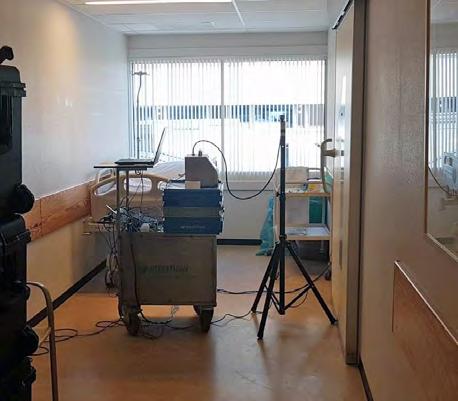
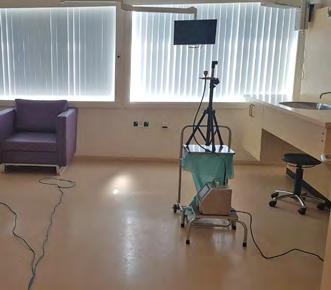 Simulation of measures to contain aerosol spread
Simulation of measures to contain aerosol spread
KAVISH KOHABIR, ROB WOLTHUIS AND ERIK SISTERMANS Towards CRISPR-Based Diagnostics
JENNY VAN DONGEN, VERONIKA ODINTSOVA AND DORRET BOOMSMA Twins, omics, development
RESEARCH AT AR&D
MARISSA HARMSEN, LYNDA
JUFFERMANS AND JUDITH
HUIRNE
Diagnosis and treatment of adenomyosis
IRENE LOK AND ANTON VAN KAAM
Bronchopulmonary dysplasia i n preterm infants
MADDY SMIES, STEFANIE DAMHUIS AND WESSEL
GANZEVOORT
Fetal Doppler ultrasound in suspected placental insufficiency
 JENNY VAN DONGEN, VERONIKA ODINTSOVA AND DORRET BOOMSMA
JENNY VAN DONGEN, VERONIKA ODINTSOVA AND DORRET BOOMSMA
Twins, omics, development
Within the AR&D research institute, the research led by professor Dorret Boomsma focusses on twin studies and genetics. We study variation in human behavior, development and health by applying the classical twin design as a ‘tool’ to assess genetic variance. We also investigate the etiology of twinning itself and consider whether being a twin influences development and disease risk.



TWINS AND GENETICS
When we say twins as a ‘tool’ we refer to the classical twin study, which compares the similarity of monozygotic (MZ) and dizygotic (DZ) twins to estimate the contribution of the genome to variation among humans for any trait or disease we can reliably measure. This insight led Boomsma in the 1980’s to establish the Netherlands Twin Register (NTR) at the Vrije Universiteit Amsterdam. The NTR initially recruited (young) adult twins and their family members. Soon afterwards, newborn twins and triplets who are registered by their parents were also included and recruitment is ongoing. Large-scale studies in genetic epidemiology have established the importance of genetic variation in growth and development, cognition and psychopathology, lifestyle, health and disease. One of our ongoing lines of research focuses on unraveling genomics and epigenomics variation associated with human MZ and DZ twinning. For this focus, Boomsma, van Dongen, Mbarek and colleagues established the twinning genetics consortium (twinningconsortium.org).
NTR BIOBANK AND BIOBANK PROJECTS
Biological sample collection has been part of many NTR projects, with the first samples collected in the 1980’s for cardiovascular and linkage studies. Between 2004 and 2010 a large enterprise with home visits to ~10.000 participants laid the foundation for the NTR Biobank and more recently, the NTRAction Biobank in children was established. DNA isolation from blood or buccal cells and multiple biomarkers, epigenetic and expression profiles and metabolite assessment in blood and urine, led to insights into the role of the DNA sequence in epigenetic regulation, RNA expression and other OMICS processes.
Veronika Odintsova works on her second PhD with Boomsma and van Dongen as two of her supervisors. Her research includes the (epi) genetics of early life traits, e.g. Apgar scores, handedness and (pediatric) aggression. She implemented new machine learning tools to optimize literature selection for systematic reviews, that were developed by the group of Rens van de Schoot (Utrecht University), and
Veronika Odintsova Dorret Boomsma Jenny van Dongenwas the first to apply the tools to a literature review of aggression. The Automated Systematic Review Software (ASR) detected relevant articles based on title and abstract analysis via machine learning algorithms (active learning) and allowed to analyze much broader lists of literature than can be done with “manual” selection. The review on the genetics of aggression was published in Psychiatric Genetics (2019) after screening over 14,000 records that mentioned human aggression and genes. It reported 35 relevant papers on genome-wide association studies of aggression. A next step is to apply AI to biomarkers detection for the complex traits and diseases.
Our review on aggression indicated that its genetic basis largely remains to be uncovered. With increases in sample size, we expect aggression to behave like any other complex human trait for which association studies have been successful. We collaborate with (inter)national colleagues in the Action consortium (www.action-euproject.eu) to identify genetic variants for childhood aggression and associated traits, combining samples from childhood cohorts, for phenotypes from other domains associated with aggression, and developing new approaches for analysing heterogeneous, family and longitudinal data.
Collaborations also were initiated for epigenetics studies of aggression and ADHD. Epigenetic studies do not focus
on the DNA code, but on mechanisms that regulate the expression of genes, e.g. DNA methylation. DNA methylation mediates effects of genetic variants in regulatory regions on gene expression and is modifiable by early life social environment, as demonstrated by animal studies, and by chemical exposures including (prenatal) exposure to cigarette smoke. Epigenome-wide association studies (EWAS) test for hundreds of thousands of locations in the genome (usually at cytosines in cytosine–guanine (CpG) dinucleotides), if the proportion of methylated alleles differs between cases and controls, or is associated with a continuous trait that varies from e.g. low to high. To identify genes that are differentially methylated in people with aggressive behavior or ADHD symptoms, Jenny van Dongen led a consortium of 21 cohorts from Action and other research groups worldwide to analyze DNA methylation profiles from > 15,000 children and adults with data on aggressive behavior and nearly 5,000 adult participants with phenotyping for ADHD. The ADHD study came out in Biological Psychiatry (2019) and the one on aggressive behavior was published in Molecular Psychiatry (2021), representing the largest EWAS of a behavioral phenotype to date.
“Boomsma, van Dongen, Mbarek and colleagues established the twinning genetics consortium”
For aggression, 48 locations were identified with associated DNA methylation levels. The genes are involved in a variety of functions, including the immune and central nervous system, and their methylation levels have been linked to chemical exposures, smoking, cognition, metabolic traits, and genetic variation. Van Dongen explains “The genetic code is fixed, but epigenetic mechanisms are dynamic and epigenetic studies improve our understanding of behavioral problems that originate from an interplay between environmental and genetic influences”. Our results provide a starting point for applications of methylation profiles as peripheral biomarkers and studies examining causal pathways of multiple exposures with aggression and related traits. The EWAS study found six aggression-associated loci where methylation in blood correlated with DNA methylation in the brain. We know that effects of genetic variants on nearby DNA methylation (cis mQTLs) correlate strongly between blood and brain cells, suggesting that we can use DNA methylation blood to study the downstream epigenetic effects of genetic variants that contribute to variation in behavior. Interestingly, DNA methylation signatures of chemical exposures and maternal rearing also show a certain (but less understood) degree of conservation across tissues.
The smaller ADHD study identified differentially methylated regions in two cohorts, including the major histocompatibility complex, where methylation levels correlated with expression
“The genetic code is fixed, but epigenetic mechanisms are dynamic”
levels of the C4A and C4B genes, previously implicated in schizophrenia. However, none of the loci were robustly associated across cohorts, warranting larger studies. These are to be initiated in the nearby future. In 2020, an international group from the fields of ADHD epigenetics, including Boomsma and van Dongen, founded a new consortium to study epigenetics in ADHD, embedded in the Psychiatrics Genomics Consortium (PCGC). Odintsova also searched for epigenetic signatures of early life exposures and traits. Epigenetic alterations might be associated with events in prenatal life and early postnatal nutritional differences. In a study on breastfeeding, she found the epigenetic signatures of being breastfed in buccal cells in a younger group of children, but not in an older group of 10-12 years. The breastfeedingassociated epigenetic signatures showed larger correlations in MZ twins compared to DZ twins suggesting that these signatures are also subject to heritable influences. There is a growing interest to improve the prediction of early life traits with multiple
omics data. Combining polygenic and epigenetic scores, we showed epigenetic scores outperformed polygenic scores, based on currently available GWASs, for prediction of maternal smoking and body mass index in adults. This provides new insights into the predictive performance of polygenic and epigenetic scores for different traits, across different tissues and ages.
TWINS, TWINNING AND EPIGENETICS
As a design to study the heritability of human traits, twin studies have made tremendous contributions to science. To many scientists and the general public, it is therefore a surprise that the fundamental question as to why and how often identical (monozygotic) twins arise has remained a mystery. An important reason for this - intriguing in itself - is that monozygotic twinning, unlike most human traits, does not segregate in families and appears to occur at random, making it hard to study monozygotic twinning in animal models.
Jenny van Dongen recently published a manuscript with entirely new findings from epigenetic data, reporting the exciting discovery of a molecular signature for MZ twinning in NTR with replication from multiple international twin cohorts. She reports that this epigenetic signature is highly replicable and that it persists, through many rounds of mitosis, to adult somatic tissues. There are multiple implications from this finding: for a number of congenital disorders a higher rate of MZ twins among affected individuals
is seen, notably Beckwith Wiedemann Syndrome and neural tube defects. It has even been hypothesized that some affected singletons with such disorders began life as part of a pair of MZ twins in the womb, without the mother’s knowledge (vanishing twin syndrome). Van Dongen is highly motivated to investigate the possible links between MZ twinning and congenital disorders, and the molecular signature they have discovered in MZ twins opens up new avenues for this. In collaborations with AR&D, they hope to extend these studies on samples from healthy twins to samples from cases with congenital disorders and to obtain funding to extend this work in somatic tissues from twins to cell types that can bring us closer to the early window in development when MZ twins arise, such as induced pluripotent stem cells.
Meanwhile, we also continue working on the inheritance and gene finding for DZ twinning, where more results obtain with increases in sample size. A polygenic risk score based on the latest discovery does significantly predict the trait ‘being a mother of DZ twins’ and next we aim to look at its characteristics in mothers who had twins after IVF.
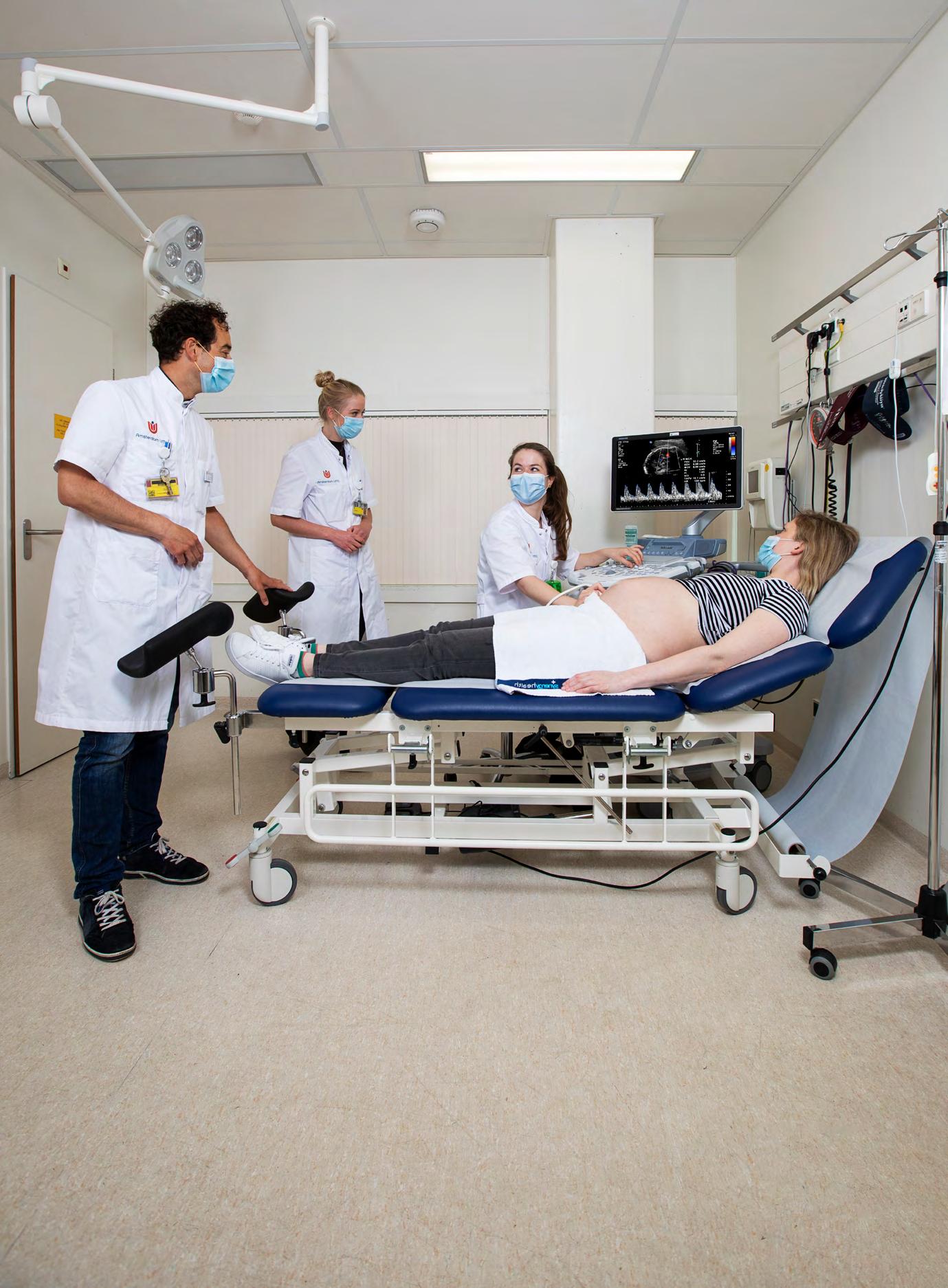
“I really think that if we can intelligently integrate diagnostic markers of placental insufficiency in late pregnancy we can prevent so many devastating outcomes of fetal deaths”SMIES, STEFANIE DAMHUIS AND WESSEL GANZEVOORT
Clinical evaluation studies of the use of fetal Doppler ultrasound
in suspected placental insufficiency in (near) term pregnancies
At AR&D, large research trials focus on placental insufficiency in pregnancy in relation to adverse perinatal outcome.

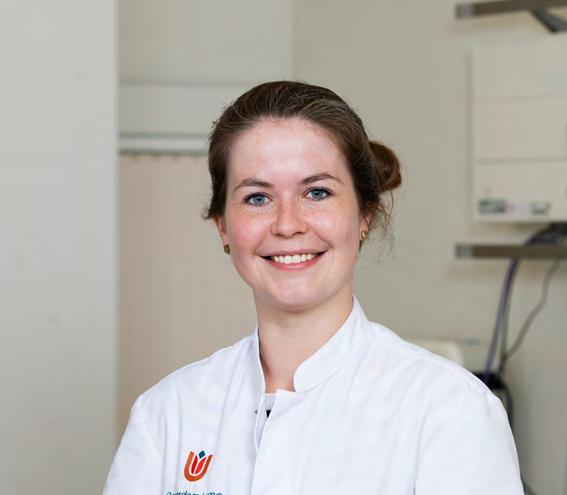
Placental insufficiency in late term pregnancies is one of the major contributors to adverse perinatal outcomes due to the risks of fetal hypoxia, including fetal death. Prevention of fetal death due to this cause can be the main route to decrease perinatal deaths worldwide. The major challenge in these gestational ages is the diagnosis: how to determine which fetuses are at risk and benefit from expedited delivery. The bestknown parameter that indicates placental insufficiency is poor fetal growth leading to a small for gestational age fetus. However, assessment of fetal growth and defining (ab)normality is complex and unreliable due to the imprecise measurement tools. Besides, being small for gestational age does not necessarily reflect pathology and an appropriate size is not a guarantee that placental function is sufficient. At these gestational ages the breathing function of the maternal-fetal exchange in the placenta is so delicate that a fetus will not withstand this challenge for a long enough period of time for this to become apparent in lagging fetal growth. One of the first alarming symptoms of imminent fetal hypoxia is reduced fetal movements. Alternative tools to detect an impaired placental function, added to the assessment of fetal size, are eagerly
wanted. The main candidate is Doppler ultrasound of fetal vessels. They can indicate redistribution of blood flow in the fetal circulation, in which blood flow is selectively redirected to the most important organs including the brain. This phenomenon has been dubbed the “brain-sparing effect” and can be expressed in an abnormal ratio between the pulsatility index of the umbilical artery and the middle cerebral artery, the so called cerebroplacental ratio (CPR). The measurement of CPR and its use in decisionmaking has been adopted universally. However, the underlying evidence which fetuses benefit (with imminent risk of hypoxia) or harm (small fetuses with normal placental function) from expedited delivery is lacking. In a collaboration between Amsterdam UMC and UMC Groningen two ZonMwfunded evaluation studies are deployed, within a broader research line on placental insufficiency. The DRIGITAT study focuses on small for gestational age fetuses as expression of impaired placental function whereas the CEPRA study looks into reduced fetal movements as the first manifestation.

OVERVIEW OF CPR TRIALS
The DRIGITAT study (PhD candidate Maddy Smies) is
Wessel Ganzevoort Maddy Smies“The challenge in clinical practice is to prevent unnecessary interventions in the healthy (small) fetuses and to pick up the fetuses at risk”
an ongoing multicenter RCT nested in a prospective cohort study. In the cohort, small for gestational age fetuses between 32 and 37 weeks are monitored until delivery with follow-up until 2 years of age. If an abnormal CPR is diagnosed, there is a randomized comparison of expedited delivery between 34 and 37 weeks versus watchful waiting until 38 weeks.

The CEPRA study (PhD candidate Stefanie Damhuis) recently started recruiting patients in a multicenter cluster randomized trial of women presenting with reduced fetal movements between 37 and 41 weeks. Centers are randomized for concealed or open measurement of CPR. If an abnormal CPR is diagnosed in an open center, the management protocol warrants expedited birth. In all other cases, management is ‘as usual’.
It is likely that the results of DRIGITAT and CEPRA may not completely answer all questions. However, it will surely be a platform of rich individual patient data in which diagnostic strategies can be further refined. In both studies a significant amount of other potential diagnostic variables, including serum biomarkers (proteins in maternal blood
that reflect placental function), are collected. It is likely that we will provide evidence how to best integrate all the available monitoring variables and other prognosticators in the risk models. Our project group is fully committed to improve the field on this subject, because any small progress will decrease the number of unnecessary interventions in many healthy small fetuses and decrease the risks of perinatal death in the few who need the intervention.
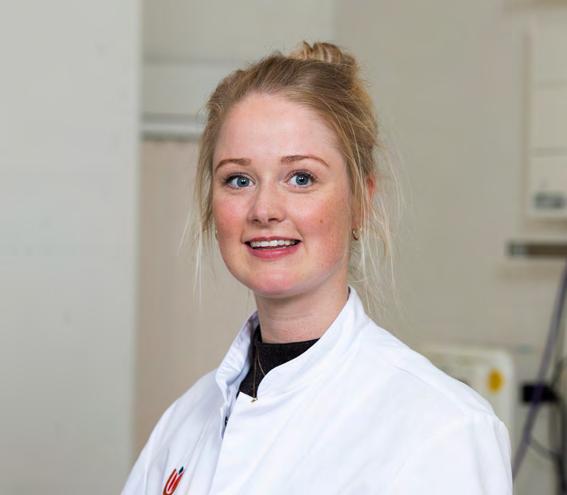 Stephanie Damhuis
Stephanie Damhuis
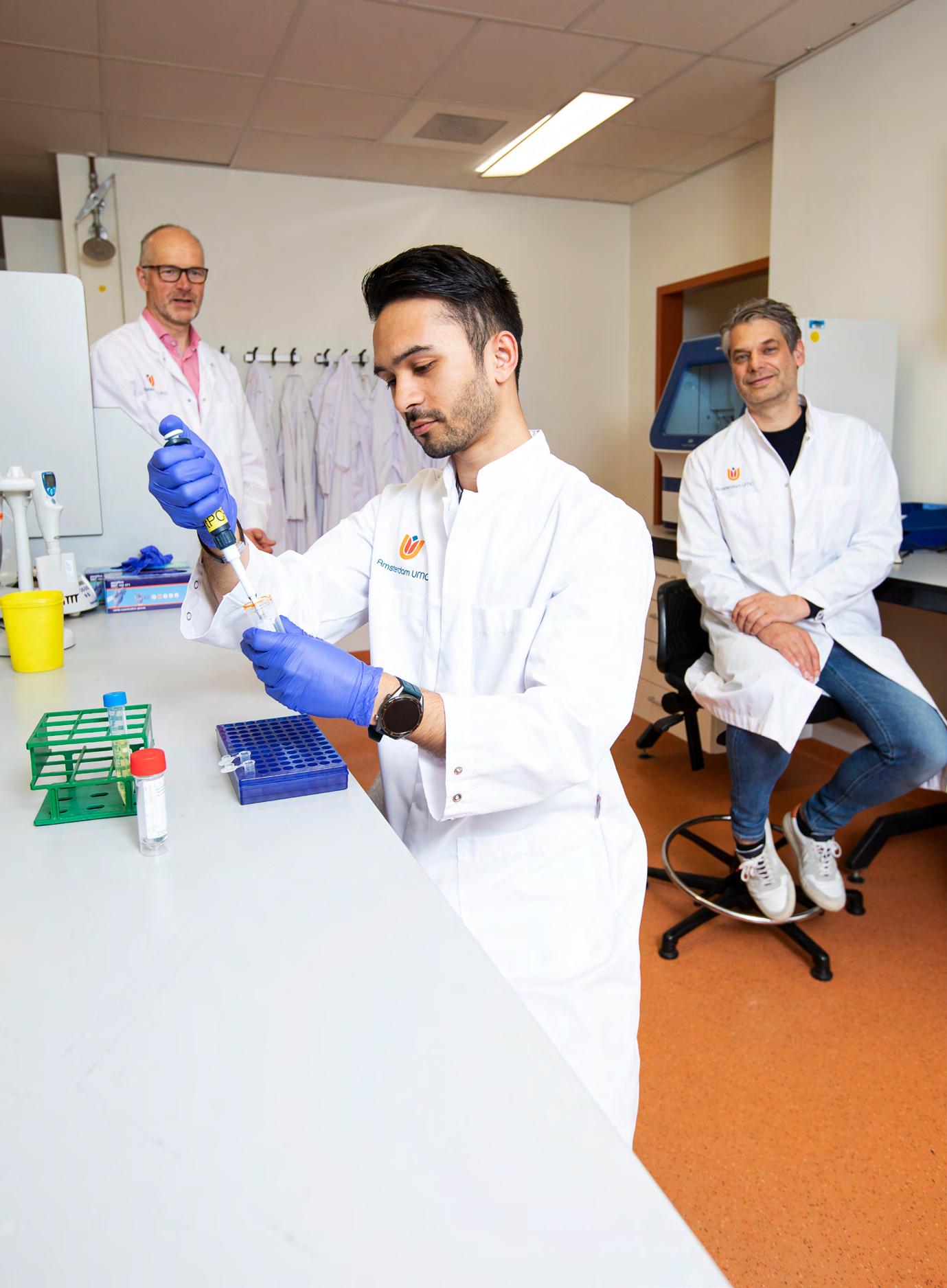
“We have been aiming to use this impressive gene editing tool in translating basic research to clinical applications”KAVISH KOHABIR AND ROB WOLTHUIS, ERIK SISTERMANS
Towards CRISPR-based diagnostics: a “cutting ” edge technology
CRISPR-technology takes a leap towards its applications in clinical genetics and is now also used in AR&D research. Principal investigators Rob Wolthuis (Clinical Genetics, section of Oncogenetics) and Erik Sistermans (Clinical Genetics, section of Genome Diagnostics) join forces and explore with their PhD candidate Kavish Kohabir CRISPR’s possibilities for noninvasive medical diagnostics and screening, including Non Invasive Prenatal Testing (NIPT).
REPROGRAMMABLE SCISSORS
Originally evolved to function as a bacterial cognate immune system, Clustered Regularly Interspaced Short Palindromic Repeats (CRISPR) and the affiliated nucleases have come a long way to now function as molecular biology tools and beyond. The discovery that CRISPRassociated (Cas) proteins can be directed at specific DNA sites of interest by means of reprogrammable guide RNAs marked a new era in nuclease biology, distinguished by experimental flexibility, reduced costs and shorter experimental pipelines. As of 2020, these major improvements have led to the recognition of CRISPR-Cas as a Nobel prize-awarded technology (Nobel prize for Chemistry 2020 for Emmanuelle Charpentier and Jennifer A. Doudna).
Ever since its first demonstration as a reprogrammable molecular scissor to cut DNA, a plethora of more natural Cas-protein variants continue to be discovered, revealing an astonishing diversity in terms of structures and catalytic capability. Additionally, Casproteins are commonly engineered and given novel features of interest. This led to an
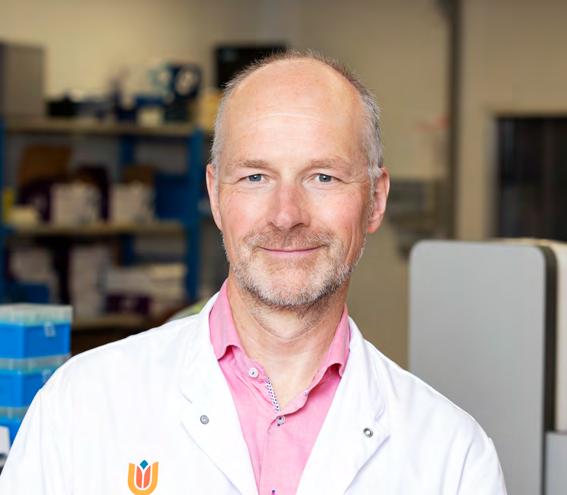
explosive growth in molecular biology tools based on CRISPR-technology. The pace at which diversification and standardization take place allows for a continuously increasing integration into modern-day research and biotech industries.
FROM SCISSORS TO SHREDDERS
Genome editing in cell-lines, performing high-throughput knock-out screens and testing for drug candidates are among the few of many CRISPR-embedded experiments routinely done at the Wolthuis lab (section of Oncogenetics) at the Cancer Center Amsterdam. Most of these experiments are typically done with the originally discovered CRISPR-nuclease Cas9, or derivatives thereof. Typically, Cas9 is supplied with a guide RNA that contains information on which target DNA Cas9 should cut. Cas12, a more recently discovered Cas protein shows somewhat different behavior than the regular ‘scissorlike’ Cas9. Upon cutting the target DNA, Cas12 induces a ‘shredder-like’ behavior, cutting other nearby DNA indiscriminately. Similarly, Cas13 shreds ambient RNA upon recognition of the target RNA sequence. These inherently different CRISPR-systems allow for novel applications in which CRISPR is used to detect the presence of specific nucleic acid sequences and subsequently shred a reporter nucleic acid coupled to a read-out. The Covid-19 pandemic prompted rapid development of CRISPR-based SARSCoV-2 detection as a response to shortage of remote, or Point-of-Care (POC), diagnostic tests. Insights in the remarkable sensitivity and specificity at which CRISPR detects nucleic acid targets drives exploration of CRISPRdiagnostics to other areas as well.
COLLABORATION FOR CRISPR AND NIPT
Erik Sistermans (head of Genome Diagnostics location VUmc and project leader of the TRIDENT studies that realized the implementation of Non Invasive Prenatal Testing (NIPT) in the Netherlands) monitors a broad range of clinically relevant genetic diagnostic screens. Amsterdam UMC is one of the three laboratories in the Netherlands that performs NIPT, a prenatal screening that can accurately detect trisomy 13, 18 and
Erik Sistermans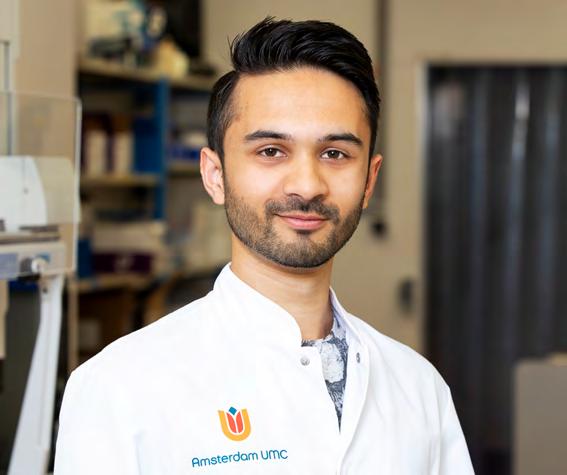

21 based on sequencing fetal cell-free DNA present in the mother’s bloodstream. There is much interest into further technological development of NIPT, as the demand increases. As a revolutionary technique itself, CRISPR may play a role in this, and in liquid biopsy diagnostics and screening in general. Hence, the section of Genome Diagnostics initiated a collaboration with the section of Oncogenetics, which was one of the first labs at Amsterdam UMC to start using CRISPR technology and co-hosts the Amsterdam UMC CRISPR expertise center. As of September 2020, Kavish Kohabir was hired as the first PhD candidate to work on this joint venture. Rob Wolthuis: ‘’Ever since we started to use CRISPR in 2014, we have been aiming to use this impressive gene editing tool in translating basic research to clinical applications. What’s new is that CRISPR also appears to work as an extremely sensitive ‘’one-test-tube’’ detection kit for specific DNA sequences. This exciting development allowed us to team up with Erik to explore CRISPR applications in new forms of genome diagnostics. We were lucky to attract Kavish’s attention with our project, as he already was quite familiar with CRISPR’s unique DNA detection powers thanks to his TU Delft graduation project.”
AGAROSE GELS AND DNA FRAGMENTOMICS
Kavish: “The first paces in this line of research are challenging, as we try to build an experimental pipeline from scratch. Apart from the many variables to be taken into account,
the more recent Cas protein derivatives have simply not been fully characterized yet. Currently I am optimizing experimental conditions and running many agarose gels to detect Cas activity, before moving on to detecting cell-free DNA. At the same time, I submerge myself into literature on cell-free DNA fragments to understand the type of target I will direct my molecular scissors and shredders to. It turns out there are consistent size, epigenetic and sequence patterns in cell-free DNA fragments that may be useful for distinguishing between the tissues of origin. This emerging field of cell-free DNA fragmentomics is still young, but points towards approaches to enrich for targets of interest, while providing more insight on the underlying biology of DNA fragmentation. This literature study even led to a review paper which recently has been submitted.”
Erik Sistermans: “It took a lot of work from many people in the Dutch NIPT consortium to implement NIPT as a first tier test in prenatal screening, including work from our AR&D PhD student Karuna van der Meij. Since the start in 2017 the screening has been very successful, and it’s now time to see how we can further improve prenatal screening. This can be done by either developing cheaper alternatives for the current methods, or by improving the resolution of the test to detect smaller anomalies as well. CRISPR is able to do both, which is why we were lucky to have Rob’s group in our department to join forces at AR&D.”
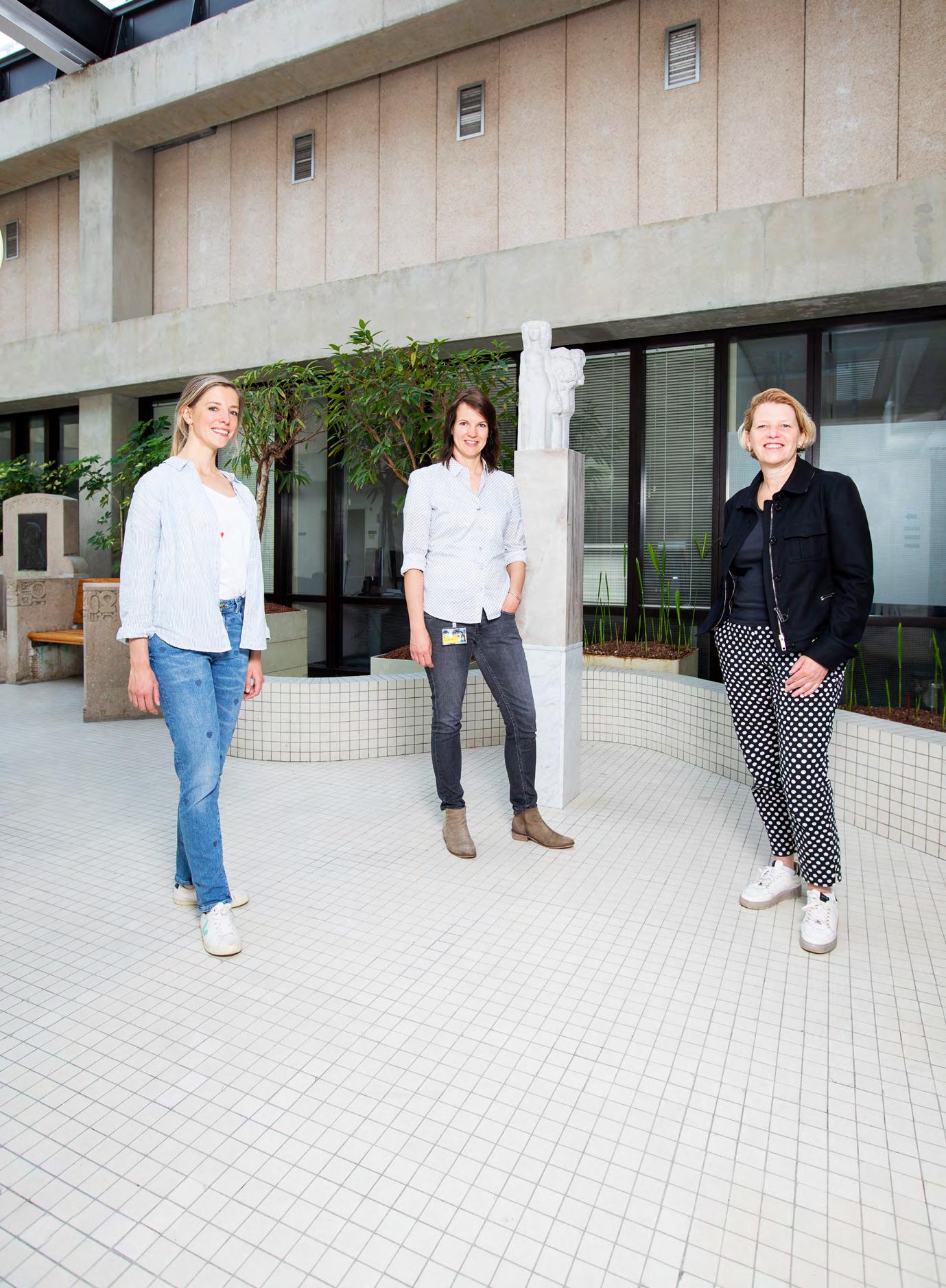
“A common issue in clinical practice is the difficulty differentiating adenomyosis from other uterine conditions”MARISSA HARMSEN, LYNDA JUFFERMANS AND JUDITH HUIRNE
Towards advanced diagnosis and treatment of adenomyosis
At AR&D extensive research is done by professor Judith Huirne and her team on the diagnosis and treatment of adenomyosis, a uterine disorder.


ADENOMYOSIS
Although adenomyosis is fairly unknown among both patients and physicians, it is a uterine disorder that affects approximately 20-30% of women. Common symptoms of abnormal uterine bleeding, pain, and subfertility that have a considerable impact on the quality of life, are often caused by adenomyosis. Current treatment strategies are based on hormonal treatment, while many patients experience non-acceptable sideeffects and end up requiring a hysterectomy.
Professor Judith Huirne has a special interest in diagnosing and treating uterine disorders and a few years ago the center for uterine disorders was founded in the
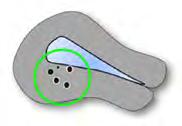
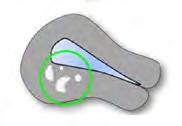
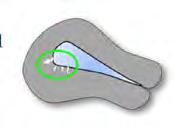

Amsterdam UMC, a tertiary referral center for complex uterine disorders. Recently our team received grants to develop and study advancements in diagnosing and treatments for adenomyosis.
The diagnosis of adenomyosis was traditionally made by histological examination. However, many women that suffer complaints might not want a hysterectomy. In these women, the diagnosis is made using ultrasound or MR imaging. Our team participated in the so called the MUSA (Morphological Uterus Sonographic Assessment) group. An international collaboration of experts in gynecological ultrasound that aims to enhance understanding and to reach a
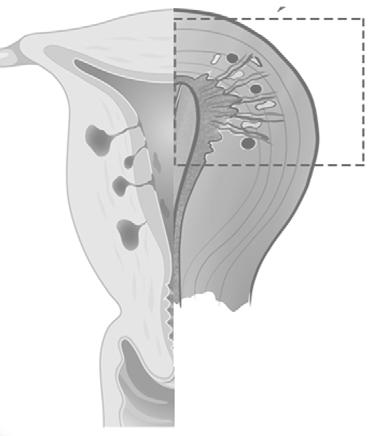
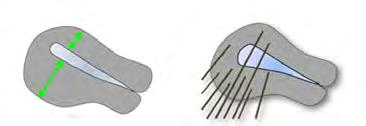

 Lynda Juffermans
Marissa Harmsen
Judith Huirne
Lynda Juffermans
Marissa Harmsen
Judith Huirne
uniform terminology describing adenomyosis, among other uterine disorders. In the past year, Marissa and Judith coordinated a modified Delphi study with experts from the MUSA group which has resulted in improved definitions of ultrasound features of adenomyosis and a classification into direct and indirect features (Figure 1). This project is important because uniform terminology is required before studies can be performed on the association between the ultrasound findings and clinical symptoms. A further step to achieve this, is a next study that will explore how we can define the severity of adenomyosis. Again, the team will seek collaboration with international experts to reach a consensus on not only diagnosing adenomyosis, but also grading the severity of the condition. This project will be coordinated by our new PhD student Lisa van Trommelen.
A common issue in clinical practice is the difficulty differentiating adenomyosis from other uterine conditions, such as uterine fibroids and sarcomas. An MRI scan can be performed, but it might remain difficult to give a definite diagnosis. A novel and very innovative method to enhance the differentiation between this disorders is contrast enhanced ultrasound (CEUS). This
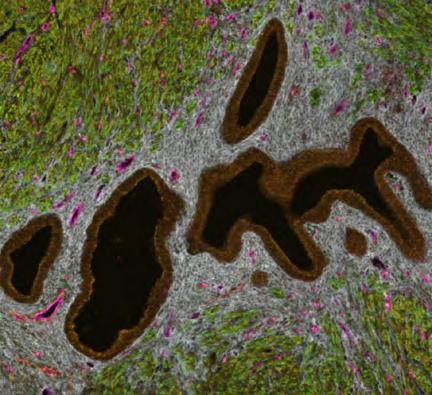
method is already used by radiologist to diagnose liver and renal masses, but the diagnostic potential for gynecological disorders has only been studied in small pilot studies up to now. While CEUS is a technically advanced technique and is capable to visualize the microvasculature and quantify measurements, the great advantage is that it can be applied in an outpatient setting. This diagnostic potential has been recognized by NWO (Nederlandse Organisatie voor Wetenschappelijk Onderzoek) who granted Judith and Lynda a large research grant to further develop this technique.
Once the diagnosis of adenomyosis is made, there are little treatment options that a gynecologist can offer a patient. When women do not tolerate the side effects of hormonal treatment, the only option is to remove the uterus (hysterectomy). Both strategies are not an option in women with adenomyosis who try to become pregnant or who are faced with fertility problems. To offer an alternative, our team is searching for non-hormonal treatment targets to relieve symptoms of adenomyosis. A possible target could be the evidence of increased angiogenesis, the formation of new blood vessels, that they found in the literature and in immune-histochemical staining of hysterectomy specimens of adenomyosis patients. Through a novel technique that allows the staining of multiple antibodies in one sample, we identified increased angiogenesis in adenomyosis tissue under supervision of Katja Jordonova (Figure 2). After this finding we initiated a project together with Arjan Griffioen from the Angiogenesis laboratory in the Cancer Center, with funding of an AR&D grant (2019), to test two strategies to inhibit angiogenesis in a recent developed mouse model for adenomyosis (Figure 3). Inhibiting angiogenesis is expected to be a nonhormonal therapeutic treatment strategy to treat adenomyosis in women who want to preserve their fertility.
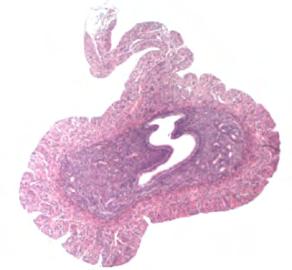


“Although there has been extensive research in humans into the etiology of BPD, the mechanism is still unclear”IRENE LOK AND ANTON VAN KAAM
Understanding the pathophysiology and optimizing the treatment
of bronchopulmonary dysplasia in preterm infants
Professor Anton van Kaam is the head of the department for Neonatal
Intensive Care at Emma Children’s Hospital, Amsterdam UMC and leads the Neonatal pulmonology group. His group focusses on neonatal lung physiology, control of breathing, lung injury, neonatal respiratory support, and bronchopulmonary dysplasia (BPD).
“Several
BRONCHOPULMONARY DYSPLASIA
Perinatal and neonatal care has improved considerably over the last decades and as a result mortality and most morbidities after preterm birth have shown a significant improvement. However, this is not the case for bronchopulmonary dysplasia (BPD), the most common complication of preterm birth. BPD, is a chronic pulmonary condition that is histologically characterized by a delay in lung development due to an imbalance of injury and repair. Infants with BPD require prolonged respiratory support and experience respiratory complaints such as wheezing/shortness of breath and respiratory tract infections during the first years of life. Lung function testing shows reduced lung capacity reaching into adolescence and there are concerns that BPD patients may have an increased risk of developing Chronic Obstructive Pulmonary Disease (COPD) at older ages. In addition to pulmonary sequelae, BPD patients also have an increased risk of neurodevelopmental impairment at long-term follow-up.
animal models have been used to study BPD development”
Effective and safe interventions to reduce the risk of BPD are therefore urgently needed. However, up to now most interventions studied in randomized controlled trials have shown disappointing results. A recent example is the STOP-BPD trial which was a multicenter study initiated in the neonatal intensive care of the Emma Children’s hospital in Amsterdam. This study could not confirm a beneficial effect of systemic hydrocortisone on the incidence of BPD, as previously described in other (observational) studies.
One of the reasons for these disappointing results from clinical trials is probably a lack of understanding on how BPD develops in preterm infants. Although there has been extensive research in humans into the etiology of BPD, the mechanism is
still unclear. There is evidence that the disease is multifactorial with prematurity, pre- and postnatal inflammation, oxygen exposure and mechanical ventilation as the most important risk factors. These insults on an underdeveloped lung with reduced antioxidant capacity, can cause significant injury to the lung tissue. To gain a better understanding of the underlying mechanisms and to explore possible treatment and preventive strategies, several animal models have been used to study BPD development. Animal studies allow for strictly controlled conditions when testing a possible mechanism in the development of BPD or the effect of an intervention on a wide variety of outcome parameters, including histology. However, the downside is that most of these animal studies are based on exaggerated single hits, for example treating rats with a high dose of oxygen for several weeks or high tidal volume ventilation, to induce lung damage. This is not in line with clinical practice where preterm infants are never exposed to just one single hit but instead face several hits that may cause lung injury and subsequent BPD. Furthermore, most of these hits are limited in size due to a more gentle application of respiratory support. This difference in complexity between animal studies and actual clinical practice may be one of the reasons why interventions tested effective in animals do not work in real life.
PHD PROJECTS
To address this discrepancy between the current animal studies and clinical practice, PhD candidate Irene Lok, pediatricianneonatologist Minke van Tuijl and Anton van Kaam developed a novel multi-hit animal model in collaboration with professor Martin Post of the department for Translational Medicine at The hospital for Sick Children (SickKids) in Toronto, Canada.
By taking the multifactorial etiology into account, the group tried to combine four known risk factors for BPD; prenatal inflammation (chorioamnionitis), hyperoxia, postnatal inflammation (sepsis) and mechanical ventilation. All individual hits have been shown to induce a BPD-like lung disease in rodents but the combination of all four has never been studied.


With a focus on lung development, injury and repair the lab of Prof. Post has decades of experience in working with rodent models for neonatal lung diseases. As every individual hit gives the risk of mortality or rejection by the mother, the accumulated knowledge of the lab proofed to be essential to establish the model. The aim is to unravel which (combination of) hit(s) leads to the most BPD-like disease, either on a histological or biochemical level. As one of the goals was to create the possibility to investigate prolonged effects on lung development, rat pups needed to be in- and extubated and ventilated with low to modest tidal volumes, thereby mimicking standard of care in the NICU, but also allowing the rat pups to be reintroduced into the litter after ventilation. For this project, a Ter Meulen beurs from the KNAW was awarded and a grant from Stichting Steun Emma.
Preliminary results show that the hits postnatal inflammation and ventilation are the main risks factors in the development of a BPD-like histological phenotype. This knowledge was used for the next step of this PhD project: to investigate the impact of dexamethasone on lung development in pups subjected to these hits. Up to now,
dexamethasone has only been studied in rodents exposed to high concentrations of oxygen without ventilation. Furthermore, most studies only reported short-term outcomes. In this study we will assess the short- and long-term effects of dexamethasone after exposure to postnatal inflammation and mechanical ventilation.
In addition to dexamethasone we will also examine the effect of active alveolarlike macrophages, which were recently discovered in the lab of Prof. Post to treat airway disease, on ventilation induced lung injury given their ability to promote repair in the developing neonatal lung.
Currently, the last samples of these additional experiments are being processed after which we will analyze all outcome parameters and publish the results. The results of this PhD project will enhance our knowledge on mechanisms involved in the development of BPD and will provide the opportunity to test the efficacy and safety of existing and new interventions to reduce the rate of BPD. By using a more realistic model of lung injury we can hopefully increase the success rate of these interventions in clinical trials.
“The ambition of AR&D is to enhance the field of reproduction and development nationwide, and to sustainably improve health care for mother and child and future generations”
“Unique about the research institute Amsterdam Reproduction & Development is that we pay attention to reproduction and development in its totality: the stage before pregnancy, conception, pregnancy, childbirth, the child as it’s growing up, and the resulting health of the adult stages of life”
